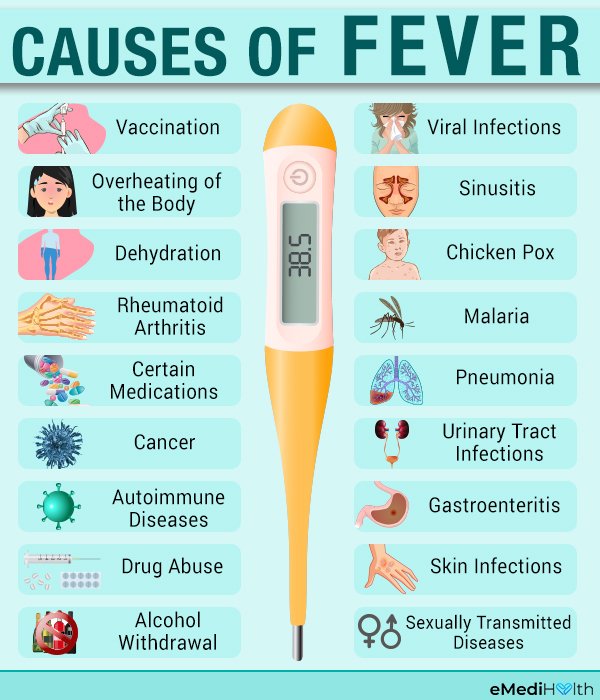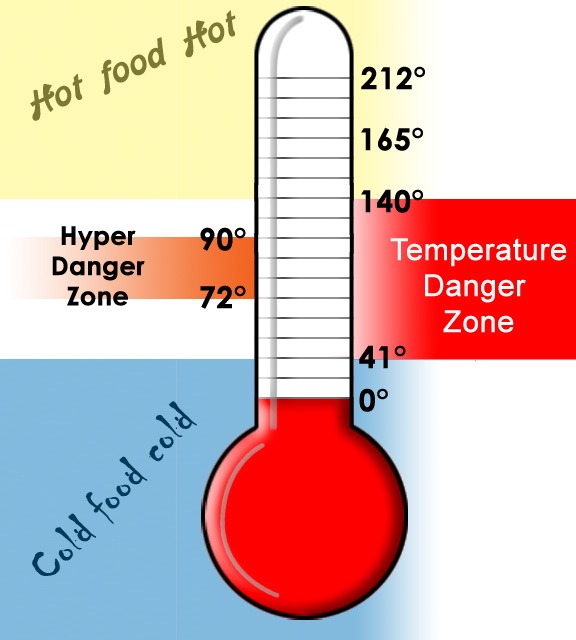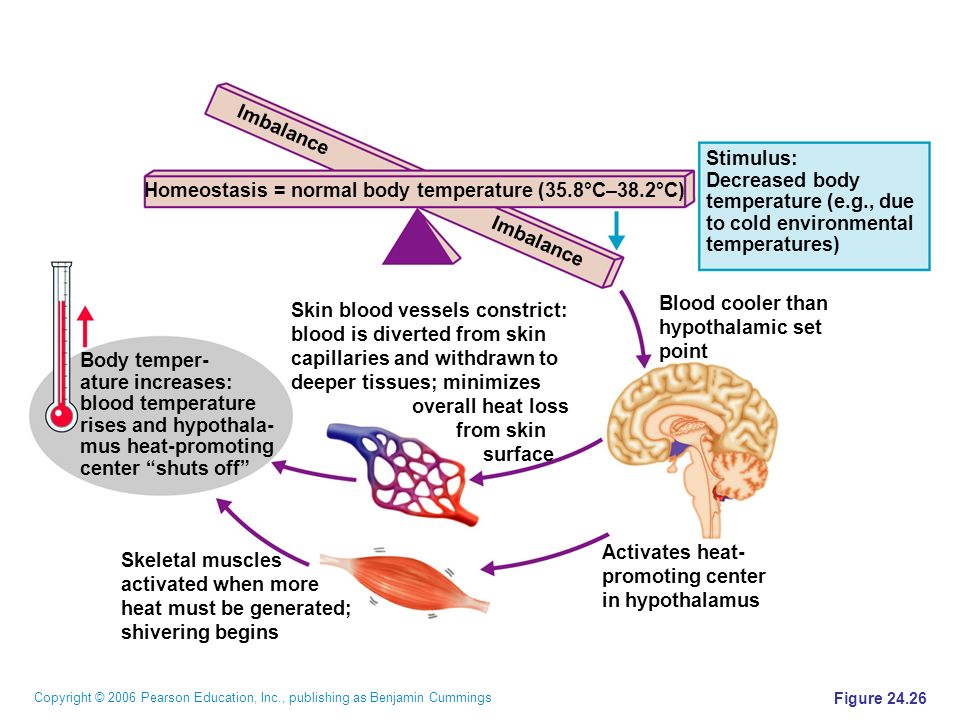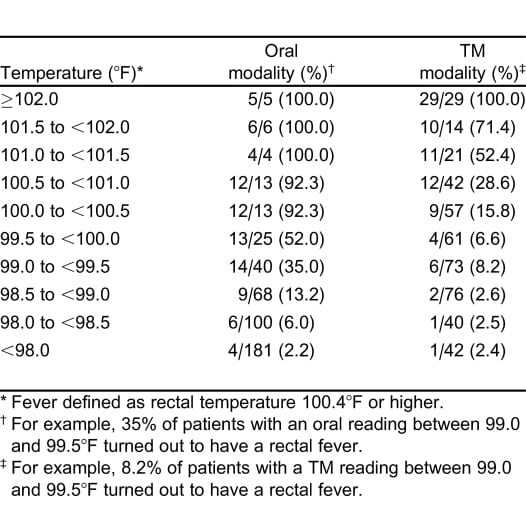At what temp is a fever dangerous. Fever Danger Thresholds: Understanding When High Temperature Becomes a Health Risk
At what temperature does a fever become dangerous. How high can a fever go before it’s considered too high. What are the signs of a dangerous fever in adults and children. When should you seek medical attention for a fever.
Understanding Fever: Causes and Body Temperature Regulation
Fever is a common symptom that occurs when the body’s temperature rises above its normal range. But what exactly causes fever, and how does our body regulate its temperature?
What Causes Fever?
Fever is not an illness itself, but rather a symptom of an underlying condition. It’s typically the body’s response to an infection or illness. When the immune system detects a threat, it triggers a series of reactions that lead to an increase in body temperature. This elevated temperature helps combat pathogens by creating an environment less favorable for their growth and replication.
Some common causes of fever include:
- Viral infections (e.g., flu, common cold)
- Bacterial infections (e.g., pneumonia, urinary tract infections)
- Heatstroke
- Autoimmune diseases
- Inflammatory conditions
- Certain medications or vaccinations
- Some types of cancer
How Does Body Temperature Regulation Work?
The human body has a sophisticated system for maintaining its temperature within a narrow range. The average body temperature is generally considered to be 98.6°F (37°C), but it can fluctuate throughout the day, typically ranging from 97.7°F (36.5°C) to 99.5°F (37.5°C).

Several organs and systems are involved in temperature regulation:
- Hypothalamus: This part of the brain acts as the body’s thermostat
- Skin: Helps in heat dissipation through sweating and blood vessel dilation
- Muscles: Can generate heat through shivering
- Blood vessels: Dilate or constrict to control heat distribution
- Sweat glands: Produce sweat to cool the body
During a fever, the body’s thermostat is reset to a higher temperature. This causes the body to retain heat and increase its core temperature until it reaches the new set point.
Fever Thresholds: When Does Temperature Become Concerning?
While a mild fever is often beneficial in fighting infections, there are certain thresholds beyond which a fever can become dangerous. Understanding these thresholds is crucial for proper health management.
What Temperature is Considered a Fever?
Generally, a temperature above 100.4°F (38°C) is considered a fever in both adults and children. However, it’s important to note that fever thresholds can vary slightly depending on age, measurement method, and time of day.

At What Point Does a Fever Become Dangerous?
The danger level of a fever isn’t solely determined by the temperature reading, but also by accompanying symptoms and the individual’s overall health. However, certain temperature ranges are considered more concerning:
- Adults: A fever of 103°F (39.4°C) or higher is considered high and may require medical attention
- Children: A temperature of 102.2°F (39°C) or higher can be concerning, especially if accompanied by other symptoms
- Infants under 3 months: Any fever (100.4°F/38°C or higher) requires immediate medical attention
It’s crucial to remember that the duration of the fever and associated symptoms are just as important as the temperature itself when assessing the need for medical intervention.
Recognizing Dangerous Fever Symptoms in Adults and Children
While temperature is an important indicator, other symptoms can signal that a fever has become dangerous and requires immediate medical attention.
Dangerous Fever Symptoms in Adults
Adults with a high fever should seek medical care if they experience:

- Severe headache
- Confusion or disorientation
- Persistent vomiting
- Difficulty breathing
- Chest pain
- Seizures
- Unusual skin rashes
- Stiff neck and sensitivity to light
Dangerous Fever Symptoms in Children
For children, the following symptoms accompanying a fever warrant immediate medical attention:
- Lethargy or unresponsiveness
- Difficulty waking up
- Severe headache
- Stiff neck
- Persistent vomiting
- Difficulty breathing
- Abdominal pain
- Unusual skin rashes
- Signs of dehydration (dry mouth, sunken eyes, no tears when crying)
Parents should trust their instincts. If a child seems unusually ill, even if their temperature isn’t extremely high, it’s best to consult a healthcare provider.
Managing Fever at Home: Effective Strategies and Precautions
While high fevers may require medical attention, many low-grade fevers can be managed effectively at home. Here are some strategies to help alleviate discomfort and potentially lower body temperature:
How Can You Safely Lower a Fever at Home?
- Rest: Allow the body to conserve energy for fighting the infection
- Hydration: Drink plenty of fluids to prevent dehydration
- Cool compress: Apply a cool, damp cloth to the forehead
- Lightweight clothing: Dress in light, breathable fabrics
- Room temperature: Keep the environment comfortably cool
- Over-the-counter medication: Use fever-reducing medications like acetaminophen or ibuprofen as directed
What Precautions Should Be Taken When Managing Fever at Home?
While home management can be effective, it’s important to exercise caution:

- Avoid ice baths or alcohol rubs, as these can cause shivering and raise body temperature
- Don’t bundle up excessively, as this can trap heat
- Follow dosage instructions carefully when using over-the-counter medications
- Monitor temperature and symptoms regularly
- Stay alert for signs that medical attention may be needed
Special Considerations: Fever in Specific Populations
Certain groups require special attention when it comes to fever management due to their increased vulnerability or unique health considerations.
How Should Fever Be Managed in Infants and Young Children?
Infants and young children are more susceptible to rapid temperature changes and potential complications from fever:
- For babies under 3 months, any fever (100.4°F/38°C or higher) requires immediate medical attention
- Use age-appropriate fever-reducing medications and dosages
- Monitor hydration closely, as young children can become dehydrated quickly
- Avoid overdressing or bundling infants, which can lead to overheating
What Precautions Should Immunocompromised Individuals Take with Fever?
People with weakened immune systems, such as those undergoing chemotherapy or with HIV/AIDS, need to be extra cautious:

- Consult healthcare providers at lower temperature thresholds
- Be vigilant for signs of infection, as fever might be the only initial symptom
- Maintain strict hygiene practices to prevent additional infections
- Follow any specific guidelines provided by their healthcare team
When to Seek Medical Attention: Clear Guidelines for Fever Management
Knowing when to consult a healthcare professional is crucial for proper fever management. While many fevers can be handled at home, certain situations call for medical intervention.
Under What Circumstances Should You Seek Immediate Medical Care for a Fever?
Seek immediate medical attention if:
- An infant under 3 months has any fever
- A child’s fever is accompanied by lethargy, severe headache, or stiff neck
- An adult’s fever is 103°F (39.4°C) or higher
- The fever persists for more than three days
- There are signs of dehydration, such as decreased urination
- The person experiences difficulty breathing or chest pain
- There’s confusion, seizures, or loss of consciousness
- The fever is accompanied by a severe, unexplained rash
How Does Recent Travel or Vaccination Affect Fever Management?
Recent travel or vaccination can influence how fever is interpreted and managed:

- Travel: Fever after visiting certain regions may indicate tropical diseases requiring specific treatment
- Vaccination: Mild fever is common after some vaccinations and usually resolves on its own
In both cases, inform your healthcare provider about recent travel or vaccinations when discussing a fever.
Understanding Fever Complications: Potential Risks and Long-term Effects
While fever is generally a beneficial response of the body, prolonged or extremely high fevers can lead to complications. Understanding these potential risks is crucial for comprehensive fever management.
What Are the Potential Complications of High Fever?
Extremely high or prolonged fevers can lead to several complications:
- Dehydration: High fever increases fluid loss through sweating and rapid breathing
- Febrile seizures: More common in young children, these seizures are typically short-lived but can be frightening
- Hallucinations: Very high fevers can cause temporary confusion or hallucinations
- Heatstroke: In severe cases, the body’s temperature regulation can fail, leading to dangerously high temperatures
Can Fever Cause Long-term Health Effects?
In most cases, fever itself does not cause long-term health effects. However:

- Prolonged high fever can potentially lead to brain damage, though this is rare
- Recurring fevers may indicate an underlying chronic condition that requires investigation
- The cause of the fever, rather than the fever itself, is more likely to have long-term impacts
It’s important to focus on treating the underlying cause of the fever and managing symptoms appropriately to prevent potential complications.
Fever Myths and Facts: Dispelling Common Misconceptions
There are many myths and misconceptions surrounding fever, which can lead to unnecessary worry or inappropriate treatment. Let’s address some of these to ensure a better understanding of fever management.
Is It True That You Should “Sweat Out” a Fever?
This is a common myth. The idea of bundling up to “sweat out” a fever is not only ineffective but can be counterproductive:
- Bundling up can raise body temperature further, potentially making the fever worse
- It can lead to dehydration due to excessive sweating
- The discomfort can make it harder for the body to rest and recover
Instead, dress comfortably and keep the environment cool to allow natural temperature regulation.

Does Fever Always Indicate a Serious Illness?
Not necessarily. While fever can be a sign of serious illness, it’s often a normal and beneficial response to minor infections:
- Many common viral infections cause fever but resolve on their own
- The height of the fever doesn’t always correlate with the severity of the illness
- It’s the combination of fever with other symptoms that often indicates the seriousness of an illness
Always consider the overall context and accompanying symptoms when assessing a fever’s significance.
Should You Always Try to Lower a Fever?
Contrary to popular belief, it’s not always necessary to actively lower a fever:
- Mild to moderate fevers can help the body fight infection more effectively
- Fever-reducing medications should be used for comfort, not just to lower temperature
- Focusing solely on lowering the fever can mask important symptoms or delay proper treatment of the underlying cause
The goal should be to manage discomfort and monitor for signs of more serious illness rather than eliminating the fever entirely.

When Fevers Get Dangerous | iCare
Having a fever doesn’t necessarily mean that you need to visit a doctor. In fact, a fever can be a good sign because it shows that your body is fighting an illness or infection. A low-grade fever is an essential part of the immune response, and you will often feel better in a few days.
Why Does Fever Occur?
A fever isn’t an illness – it is a symptom of another health condition. Usually, the body develops a fever in response to an infection that is occurring. The illness or disease is detected, then the immune system kicks into gear to fight the virus or bacteria. This response stimulates the body’s defenses, sending out the white blood cells that are needed for protection. Fever can be caused by a variety of conditions, including:
- Flu
- Common cold
- Heatstroke
- Ear infections
- Pneumonia
- Sinus infection
- Internal infection
- Skin infection
- Bronchitis
- Urinary tract infections
- Blood clots
- Appendicitis
- Autoimmune diseases
- Rheumatoid arthritis
- Inflammatory bowel disease
- Cancer
- Hormone disorders
- Illegal drugs
Sometimes, fever is a temporary response to a specific cause. For example, young children often have a fever when teething or for a day or two after immunizations.
For example, young children often have a fever when teething or for a day or two after immunizations.
How Body Temperature Works
The average body temperature is 98.6 degrees F, but it is normal for the temperature to range between 97.7 degrees F and 99.5 degrees F throughout the day. For example, it is common for the body temperature to be higher in the evening compared to the morning. If the temperature goes above 99.5 degrees F, then it is considered a fever in both adults and children.
The body has built-in systems to maintain normal body temperature. Several organs affect temperature regulation, including the skin, brain, muscles, and blood vessels. If the body needs to cool down, then a few responses might occur:
- Sweat production increases to cool the skin
- Blood is moved closer to, or away from, the surface of the skin
- You feel the urge to move to a cooler environment
- Water in the body is retained or released through the sweat glands and urinary system
A fever is not the only factor that can increase body temperature. Heavy clothing, physical exertion, strong emotions, high heat and humidity, menstruation, and certain medications can increase body temperature. When you are taking a person’s temperature, check to ensure these other factors aren’t influencing the thermometer reading. For example, if a child has been running around, have them sit still for 20 minutes before using the thermometer to ensure you are getting an accurate reading.
Heavy clothing, physical exertion, strong emotions, high heat and humidity, menstruation, and certain medications can increase body temperature. When you are taking a person’s temperature, check to ensure these other factors aren’t influencing the thermometer reading. For example, if a child has been running around, have them sit still for 20 minutes before using the thermometer to ensure you are getting an accurate reading.
Tips for Lowering a Fever
Just because a person has a mild fever, doesn’t mean that you need to be proactive in lowering the fever. Often, the best solution is to let the fever run its course by resting at home and staying hydrated. If you notice that the fever is increasing in severity, then these are a few things that can be done at home to see if the fever can be managed without medical treatment:
- Take a lukewarm bath (not cold water)
- Place a cool washcloth on the forehead
- Use over-the-counter acetaminophen, according to dosage directions on the package.
 Choose children’s brand medication for young members of your family.
Choose children’s brand medication for young members of your family. - Adjust the thermostat in the house
- Remove blankets and heavy clothing
- Drink plenty of fluids, especially drinks with electrolytes to counteract the minerals lost through sweating
Even though ice baths and alcohol rubs are sometimes recommended as DIY fever treatments, these at-home methods should be avoided. Ice and alcohol rubs cause the body to shiver, which increases the internal temperature even more.
The main benefit of lowering a fever is to help the person be more comfortable, especially when they are trying to sleep at night. Additionally, body temperature regulation is essential to avoid potentially dangerous side-effects, such as seizures.
When is a Fever Dangerous?
A mild fever isn’t considered dangerous. If you or a family member has a low-grade fever with other common illness symptoms, then a few days of rest and healing at home might be just what the doctor ordered. But how do you know when it is time to seek medical attention? If the fever escalates, then it could potentially become dangerous.
But how do you know when it is time to seek medical attention? If the fever escalates, then it could potentially become dangerous.
These are a few signs that indicate you should seek medical attention immediately. Talk to the doctor if the fever is accompanied by:
- Bruising
- Rashes
- Difficulty breathing
Other signs that you need medical attention might include:
- You’ve recently received one or more vaccinations
- You visited another country recently
- You have a serious pre-existing condition
- A child seems confused or delirious
- A child won’t stop crying
- The person has a weakened immune system or other medical complications
Fevers in Children vs. Adults
One determining factor regarding whether medical care is needed is based on the severity of the fever and the age of the person. You should talk to a doctor when these criteria are met:
- 0 – 3 Months Old: The child has a rectal temperature at or above 100.
 4 degrees F
4 degrees F - 3 – 12 Months Old: An oral temperature reading is at or above 102.2 degrees F
- 2 Years Old – Teenage Years: If the child’s fever lasts more than 24 – 48 hours
- Adults: If the fever is above 103 degrees F and lasts more than 48 hours. Any time an adult fever reaches 105 or more, talk to a doctor right away.
Medical Treatment for Fever
Since a fever is a symptom of an underlying condition, it is important to obtain an accurate diagnosis to determine the best treatment plan. For example, antibiotics might be recommended for a bacterial infection, such as an ear infection or strep throat.
If you need medical care right away, then visiting an Urgent Care might be the most effective solution. At our clinic, you don’t have to schedule an appointment or wait for an opening. Walk-ins are welcome! Your entire family has access to fast treatment for a variety of injuries and illnesses.
Visit us anytime to access high-quality services from our board-certified medical team. We provide both urgent care services and emergency treatments. Call iCare ER and Urgent Care if you have questions about available services, or if you would like to schedule an appointment.: (214) 407-8668.
High temperature (fever) in adults
What is a high temperature?
Normal body temperature is different for everyone and changes during the day.
A high temperature is usually considered to be 38C or above. This is sometimes called a fever.
Check if you have a high temperature
You may have a high temperature if:
- your chest or back feel hotter than usual
- you have other symptoms, such as shivering (chills), sweating or warm, red skin (this may be harder to see on black or brown skin)
- a thermometer says your temperature is 38C or above
Important
If you feel hot or shivery, you may have a high temperature even if a thermometer says your temperature is below 38C.
Do I need to take my temperature?
You do not need to take your temperature using a thermometer, but you can if you have one.
Make sure you use it correctly to help get an accurate result. See how to take a temperature.
Treating a high temperature
There are some things you can do to help treat a high temperature.
Do
get lots of rest
drink plenty of fluids (water is best) to avoid dehydration – drink enough so your pee is light yellow and clear
take paracetamol or ibuprofen if you feel uncomfortable
Information:
Try to stay at home and avoid contact with other people until you do not have a high temperature.
Urgent advice: Ask for an urgent GP appointment or get help from NHS 111 if you have:
- a high temperature and you’ve been treating it at home but it’s not getting better or is getting worse
You can call 111 or get help from 111 online.
Causes of a high temperature
Many things can cause a high temperature. It’s not usually a sign of anything serious.
It’s often just caused by your body fighting an infection, such as a cold or flu.
Sometimes it could be a sign of something more serious if your temperature is very high or will not come down.
Information:
Advice for children
This page is for adults. For advice about children, see high temperature (fever) in children.
Page last reviewed: 24 May 2023
Next review due: 24 May 2026
Why is temperature dangerous?
What is the danger of temperature?
Most of all, parents are afraid of fever, that is, an increase in body temperature in children.
We have collected several options for “threats” that scare parents if the temperature on the thermometer rises above “critical levels”:
- Protein will coagulate
- The brain will overheat
- Seizures will start
- The child will “burn out”.
What’s in reality?
An increase in temperature (fever) is a protective mechanism of the human body during the fight against infection. The body is able to control this process and it cannot harm itself.
A safe increase in body temperature is considered a mark of up to 42 degrees. And the protein will not curl. It is impossible to boil an egg at this temperature.
Let’s give an example: almost all housewives have an oven in the kitchen; for cooking a pie, a temperature of 180 degrees is required, for cooking fish or meat – 200-220 degrees. You yourself set this temperature and at the same time the oven will not overheat and will not break.
The same is true of the body: by engaging in the fight against viruses and bacteria, the immune system (hostess) begins to produce pyrogens (oven mode switches). Under their influence, the hypothalamus (oven) raises the temperature from normal to 39-40 degrees.
This is required to increase the efficiency of immune mechanisms, to produce acute phase proteins (C-reactive protein, procalcitonin), which destroy pathogens. Microbes at this temperature will also hardly be able to multiply.
After the number of bacteria and viruses in the body has decreased, pyrogens cease to be produced and stimulate the hypothalamus, the body temperature returns to normal 36-37 degrees.
Is it necessary to fight “white fever” and give No-shpu?
To increase the temperature, the body activates its forces, reducing heat loss: a spasm of peripheral vessels occurs, the limbs cool, the skin turns pale, trembling and chills are connected.
In the post-Soviet space, it was customary to call this stage of white fever and try in every possible way to turn it into red. This term is absent in international sources, it is believed that this is only one of the mechanisms / stages of temperature increase.
No-shpa is not needed in this case, since its action is directed to the smooth muscles of the internal organs, and not to the vessels.
Febrile convulsions at high temperature.
They occur in about 2-5% of children aged 6 months to 5 years, with a peak usually occurring at 12-18 months of age.
The development is characteristic on the first day of the disease, when the temperature rises sharply beyond 38-39 degrees, the duration of convulsions is up to 15 minutes (usually up to 5 minutes), ending with sleep.
They are benign, do not require treatment and do not recur the next day.
They arise due to the immaturity of the central nervous system of babies, and then the children outgrow them.
Note that for prevention, drinking antipyretics is not effective.
When should the temperature be lowered?
It is necessary to monitor the child’s condition: when he is very ill, his muscles and joints, head and ears hurt, then we must give an antipyretic with an anesthetic purpose, regardless of what the thermometer shows.
What drugs can be used?
Paracetamol and ibuprofen are just them.
In order to get the effect of the medicine, you need to create cool and humid air in the room, it is important to solder the child (to prevent dehydration).
The immune system of the child should be able to fight viruses and bacteria, do not interfere with this by giving antipyretics uncontrollably.
High fever – causes, in which diseases it occurs, diagnosis and treatment
Encephalitis
Tick-borne encephalitis
Borreliosis
Measles
Whooping cough
Rubella
Diphtheria
Scarlet fever
Chicken pox
Poliomyelitis
Colds
2552
05 July
High temperature – the causes of occurrence, in which diseases it occurs, diagnosis and methods of treatment.
An increase in temperature serves as a protective reaction of the body and can occur under the influence of various factors. Be sure to separate such conditions as hyperthermia (overheating) and fever, which is also accompanied by an increase in body temperature, but its mechanism differs from overheating and requires other measures to influence the body.
Possible causes
Fever is triggered by external (or exogenous) pyrogens – substances foreign to the body that have entered the bloodstream. These include infectious pyrogens: toxins of viruses and metabolic products of microorganisms. The primary group also includes non-infectious pyrogens: certain lipids, proteins and protein-containing substances that enter the body from the external environment or occur in the body during inflammatory processes, allergic reactions, or the decay of tumor tissues. Primary pyrogens, interacting with the cells of the immune system, initiate the production of internal, or endogenous (secondary) pyrogens – cytokines. They, acting on the center of thermoregulation in the brain, cause an increase in body temperature.
They, acting on the center of thermoregulation in the brain, cause an increase in body temperature.
The feverish state has its own dynamics and includes several stages.
If body temperature is taken as the criterion for the course of fever, then three stages can be distinguished:
stage 1 – the period of temperature rise;
Stage 2 – the period of preservation, or standing temperature;
Stage 3 – the period of temperature decrease to normal values ..
Temperature rise stage
The rate of temperature rise depends on the concentration of pyrogens in the blood and can serve as a diagnostic sign.
A rapid increase in temperature to high values is observed with influenza, lobar pneumonia,
and also possible when a foreign protein enters the blood (for example, when transfusing blood components). In this case, there is a strong chill, there is a cooling of the skin, which is due to a spasm of the superficial blood vessels.
A slow rise in temperature is characteristic of adenovirus infection, typhoid fever, brucellosis. In these cases, there may be no pronounced chills, and the first sensations of the disease will be fever, dry eyes, headache, and malaise. Possible blanching of the skin, coldness of the feet and hands.
What should be done?
First of all, it is necessary to warm the patient by wrapping him in a blanket. A heating pad applied to the legs and arms gives a good effect.
Temperature standing stage
After reaching the upper value, the temperature remains at this level for some time. This period is called the stage of standing temperature, when a balance is established between heat production and heat transfer. At this stage of the disease, the patient feels fever, drowsiness. Perhaps lack of appetite, thirst. Depending on the level of temperature rise, a weak or subfebrile temperature is distinguished – 37-38 ° C; moderate, or febrile – 38-39°C; high – 39-41 ° C and excessive – above 41 ° C.
Knocking down the temperature is not always appropriate.
Fever is a protective and adaptive reaction of the body that occurs in response to the action of pyrogens.
At a temperature of 37.5-38 ° C, the body actively fights infection. However, each person reacts differently to elevated temperatures. Therefore, when deciding on a drug-induced decrease in temperature, one should focus on well-being and associated symptoms. This is especially true for children. Conditionally, the threshold temperature at which it is necessary to strengthen the monitoring of the state of health and external manifestations is a temperature of 38 ° C and above.
The period of maintaining the temperature at a high level depends on the infectious agent, the state of immunity and the treatment being carried out.
In normal cases, this time can vary from one to five days, but in severe cases of the disease, it can be extended for several weeks.
Temperature fluctuations in a febrile patient have a certain rhythm: the maximum values are noted at 5-6 pm, the minimum – about 4-5 am and variability. With inflammation of the lungs, for example, the temperature can stay at a high level for a long time. For bronchitis, pulmonary tuberculosis are characterized by significant daily temperature fluctuations (1-2 ° C). The so-called debilitating fever is very dangerous, which is characterized by sharp temperature fluctuations (with a rapid rise and fall), sometimes repeated two or three times during the day. There is such a fever with sepsis, the presence of cavities in pulmonary tuberculosis and the decay of lung tissue.
With inflammation of the lungs, for example, the temperature can stay at a high level for a long time. For bronchitis, pulmonary tuberculosis are characterized by significant daily temperature fluctuations (1-2 ° C). The so-called debilitating fever is very dangerous, which is characterized by sharp temperature fluctuations (with a rapid rise and fall), sometimes repeated two or three times during the day. There is such a fever with sepsis, the presence of cavities in pulmonary tuberculosis and the decay of lung tissue.
What should be done?
At high temperatures, it is necessary, if possible, to free the patient from excess clothing and provide access to fresh air, eliminating drafts. A cold compress can be applied to the forehead and areas of large vessels (elbows and knees). You can wipe the body with a towel moistened with cool water.
The issue of drug temperature reduction is decided in each case individually.
It is more difficult for a person to endure not high temperature, but intoxication of the body. Therefore, the main measures should be aimed at removing toxic metabolic products from the body. This is achieved by drinking plenty of water, if necessary – cleansing enemas.
Therefore, the main measures should be aimed at removing toxic metabolic products from the body. This is achieved by drinking plenty of water, if necessary – cleansing enemas.
When prescribing antipyretic drugs for children, the following nuances are taken into account:
– the age of the child is less than three months, and the temperature has risen above 38 ° C;
– a previously healthy child between the ages of three months and six years has a temperature above 39°C;
– in a child with heart or lung disease, the temperature exceeds 38 ° C;
– a child of any age (up to 18 years old) with a convulsive syndrome, diseases of the central nervous system, in the presence of such external signs as pallor, cyanosis of the skin and cold extremities, general lethargy and lethargy, it is necessary to reduce the temperature if it reaches 38 ° C Otherwise, a convulsive syndrome may occur, which is extremely dangerous and can lead to suffocation.
At high temperatures, the functioning of all organ systems changes.
The heart rate increases by 8-10 beats per minute for every degree of temperature increase. Often there are arrhythmias, more often extrasystole (extraordinary contractions), spasm of blood vessels and increased blood pressure.
The secretory and motor functions of the gastrointestinal tract are reduced, which leads to food retention in the intestines, and the lack of fluid causes constipation. Given these factors, it is necessary to adjust the nutrition of a febrile patient. Preference should be given to liquid easily digestible food, reducing the portion size, but increasing the number of meals.
There is a feature that should be taken into account for patients with diabetes. It must be remembered that fever is accompanied by an increase in blood glucose levels, which requires appropriate measures.
Treatment
The main antipyretic drugs include non-steroidal anti-inflammatory drugs – paracetamol, ibuprofen, diclofenac. These drugs act quickly and are quickly excreted from the body.
These drugs act quickly and are quickly excreted from the body.
Although the practice of taking antipyretic pills is widespread, experience shows that side effects are more pronounced in this case.
It is preferable to use rectal suppositories.
With this method of drug administration, the active substance enters directly into the blood through the blood vessels of the rectum. There is no irritating effect of drugs on the gastric mucosa. It becomes possible to administer the drug regardless of food intake.
Temperature reduction stage
The decrease in temperature in infectious diseases occurs either quickly and is accompanied by profuse sweating, and sometimes a drop in blood pressure, or slowly, within one to two days.
What should be done?
You can help the patient with a sharp drop in temperature by quickly changing wet clothes to dry ones and drinking hot tea.
It is important to remember that a decrease in temperature is not an indicator of recovery.

 Choose children’s brand medication for young members of your family.
Choose children’s brand medication for young members of your family. 4 degrees F
4 degrees F